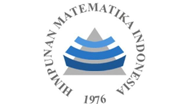Hybrid GSTAR-Machine Learning Model for Forecasting Tourists Numbers in Yogyakarta
Abstract
Tourism management in DI Yogyakarta is vital to ensure tourism benefits local communities. A key challenge lies in the uncertainty and spatial interdependence of tourist visits among neighboring regions. While the GSTAR model captures spatial relationships, its accuracy decreases with outliers, non-linearity, and assumption violations. To overcome these issues, this study integrates GSTAR with machine learning. Using 168 observations of tourist visits across DI Yogyakarta’s regencies/cities (January 2010–December 2023), GSTAR-GLS-XGBoost model achieved 22–34% lower RMSE than other models. Tourist numbers fluctuate greatly, with peaks in May, June, July, and December. Practically, these findings can help local governments and stakeholders optimize resource allocation, plan promotions, and prepare facilities during peak seasons for sustainable tourism management in DI Yogyakarta.
Keywords
Full Text:
PDFReferences
Kemenparekraf, “Siaran Pers: Menpar Optimistis Capaian Kinerja Pariwisata 2024 Lampaui Realisasi Tahun Sebelumnya,” 2024.
W. Hadi, “Menggali Potensi Kampung Wisata Di Kota Yogyakarta Sebagai Daya Tarik Wisatawan,” Journal of Tourism Economics, vol. 2, pp. 129–139, 2024, doi: 10.36594/jtec/08yq9670.
BPS, “Statistik menurut Subjek,” 2024.
A. Z. Yonatan, “Simak Kota Pilihan Orang Indonesia untuk Wisata,” 2024.
M. Hu, H. Li, H. Song, X. Li, and R. Law, “Tourism demand forecasting using tourist-generated online review data,” Tour Manag, vol. 90, p. 104490, 2022, doi: 10.1016/j.tourman.2022.104490.
N. Yilmaz, “Turkey’s Health Tourism Demand Forecast: the ARIMA Model Approach,” International Journal of Health Management and Tourism, vol. 7, no. 1, pp. 47–63, 2022, doi: 10.31201/ijhmt.1065460.
M. Arora, “Forecasting Number of Inbound Tourists in India Adopting ARIMA Model,” MATRIX Academic International Online Journal of Engineering and Technology, vol. 6, no. 1, pp. 9–17, 2023, doi: 10.21276/matrix.2023.6.1.2.
Tsay, Multivariate Time Series Analysis. Chicago: Wiley, 2014.
B. Z. et al., “A graph-attention based spatial-temporal learning framework for tourism demand forecasting,” Knowl Based Syst, vol. 263, p. 110275, 2023, doi: 10.1016/j.knosys.2023.110275.
M. Prastuti, L. Aridinanti, and W. P. Dwiningtyas, “Spatio-Temporal models with intervention effect for modelling the impact of Covid-19 on the tourism sector in Indonesia,” in Journal of Physics: Conference Series, 2021. doi: 10.1088/1742-6596/1821/1/012044.
I. Adella, D. Ispriyanti, and H. Yasin, “Pemodelan Jumlah Wisatawan Di Jawa Tengah Menggunakan Metode Generalized Space Time Autoregressive - Seemingly Unrelated Regression (GSTAR-SUR),” Jurnal Gaussian, vol. 11, no. 2, pp. 258–265, 2022, doi: 10.14710/j.gauss.v11i2.35473.
W. W. S. Wei, Time Series Analysis: Univariate and Multivariate Methods, 2nd ed. New York: Pearson Addison Wesley, 2006.
A. B. Kock and T. Teräsvirta, “Forecasting With Nonlinear Time Series Models,” in The Oxford Handbook of Economic Forecasting, Oxford University Press, 2012, pp. 61–88.
S. Makridakis, E. Spiliotis, and V. Assimakopoulos, “Statistical and Machine Learning forecasting methods: Concerns and ways forward,” PLoS One, vol. 13, no. 3, pp. 1–26, 2018, doi: 10.1371/journal.pone.0194889.
T. Chen and C. Guestrin, “XGBoost,” in Proceedings of the 22nd ACM SIGKDD International Conference on Knowledge Discovery and Data Mining, 2016, pp. 785–794. doi: 10.1145/2939672.2939785.
A. J. Smola and B. Schölkopf, “A tutorial on support vector regression,” Stat Comput, vol. 14, no. 3, pp. 199–222, 2004, doi: 10.1023/B:STCO.0000035301.49549.88.
Y. Nader, L. Sixt, and T. Landgraf, “DNNR: Differential Nearest Neighbors Regression,” in Proceedings of Machine Learning Research, 2022, pp. 16296–16317. [Online]. Available: http://arxiv.org/abs/2205.08434
F. Mardliyah, E. Zukhronah, and Y. Susanti, “Forecasting the number of domestic tourist visits to Bali using support vector regression,” in AIP Conference Proceedings, 2025, p. 20031. doi: 10.1063/5.0262760.
E. H. Rachmawanto and C. A. Sari, “Visitor Forecasting Decision Support System at Dieng Tourism Objects Using the K-Nearest Neighbor Method,” Journal of Applied Intelligent Systems, vol. 7, no. 2, pp. 183–192, 2022.
X. Liu, Y. Chen, Z. Qiu, and M. Chen, “Forecast of the Tourist Volume of Sanya City by XGBoost Model and GM Model,” in 2019 International Conference on Cyber-Enabled Distributed Computing and Knowledge Discovery (CyberC), 2019, pp. 166–173. doi: 10.1109/CyberC.2019.00038.
R. J. Hyndman and G. Athanasopoulos, Forecasting: principles and practice, 2nd ed. Melbourne: OTexts, 2018.
M. E. Nor, A. I. M. Nurul, and M. S. Rusiman, “A Hybrid Approach on Tourism Demand Forecasting,” in Journal of Physics: Conference Series, 2018. doi: 10.1088/1742-6596/995/1/012034.
D. P. M. Abellana, D. M. C. Rivero, M. E. Aparente, and A. Rivero, “Hybrid SVR-SARIMA model for tourism forecasting using PROMETHEE II as a selection methodology: a Philippine scenario,” Journal of Tourism Futures, vol. 7, no. 1, pp. 78–97, 2020, doi: 10.1108/JTF-07-2019-0070.
M. He and X. Qian, “Forecasting tourist arrivals using STL-XGBoost method,” Tourism Economics, 2025, doi: 10.1177/13548166241313411.
Suhartono, N Nahdliyah, MS Akbar, NA Salehah, and A Choiruddin, “A MGSTAR: An Extension of The Generalized Space-Time Autoregressive Model,” Journal of Physics: Conference Series. Vol. 1752, No. 1, 2021. doi: 10.1088/1742-6596/1752/1/012015.
Devi Munandar, budi Nurani Ruchjana, Atje Setiawan Abdullah, and Hilman Ferdinandus Pardede.” Literature Review on Integrating Generalized Space-Time Autoregressive Integrated Moving Average (GSTARIMA) and Deep Neural Networks in Machine Learning for Climate Forecasting Devi,” Mathematics, 11, 2975, 2023, doi: 10.3390/math11132975
Setiawan, Suhartono, and M. Prastuti, “S-GSTAR-SUR model for seasonal spatio temporal data forecasting,” Malaysian Journal of Mathematical Sciences, vol. 10, pp. 53–65, 2016.
G. Sohibien, “Perbandingan Model STAR dan GSTAR untuk Peramalan Inflasi Dumai, Pekanbaru, dan Batam,” Statistika, vol. 5, no. 1, 2017.
Suhartono, S. R. Wahyuningrum, Setiawan, and M. S. Akbar, “GSTARX-GLS Model for Spatio-Temporal Data Forecasting,” Malaysian Journal of Mathematical Sciences, vol. 10, pp. 91–103, 2016.
M. S. Akbar, Setiawan, Suhartono, B. N. Ruchjana, and M. A. A. Riyadi, “GSTAR-SUR Modeling with Calendar Variations and Intervention to Forecast Outflow of Currencies in Java Indonesia,” in Journal of Physics: Conference Series, 2018. doi: 10.1088/1742-6596/974/1/012060.
R. Rodríguez-Pérez and J. Bajorath, “Evolution of Support Vector Machine and Regression Modeling in Chemoinformatics and Drug Discovery,” J Comput Aided Mol Des, vol. 36, no. 5, pp. 355–362, 2022, doi: 10.1007/s10822-022-00442-9.
DOI: http://dx.doi.org/10.30829/zero.v9i2.26381
Refbacks
- There are currently no refbacks.

This work is licensed under a Creative Commons Attribution-ShareAlike 4.0 International License.
Publisher : Department of Mathematics Faculty of Science and Technology Universitas Islam Negeri Sumatera Utara Medan | |
✉️ Email: zero_journal@uinsu.ac.id 📱 WhatsApp:085270009767 (Admin Official) | |
 |  |  |  |  |



